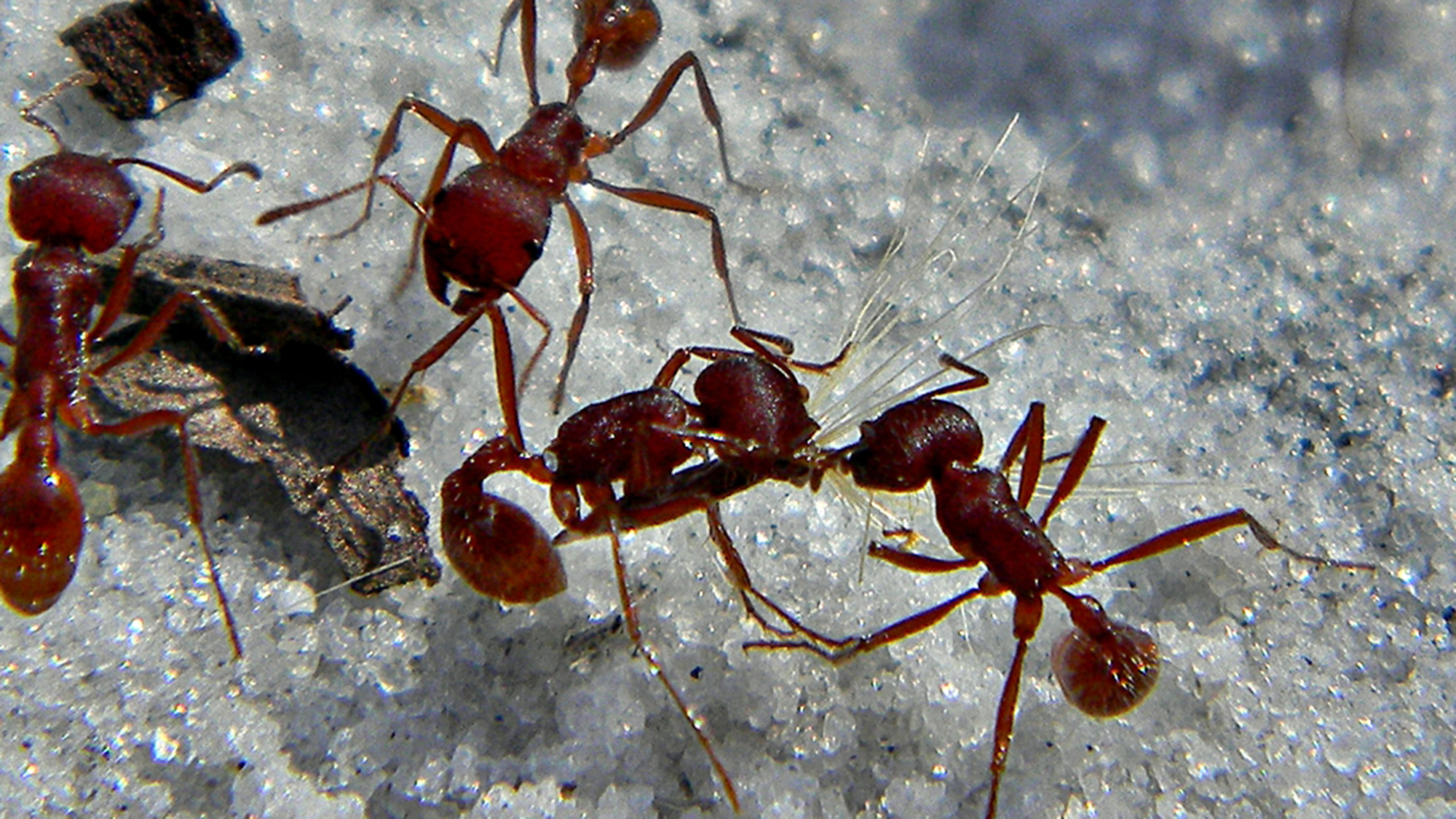
An ant colony itself is sometimes referred to as an organism. Credit: Bob Peterson
The emergent complexity of ant societies is one of the most fascinating phenomena in the natural world: how do these tiny creatures form such intricate social networks? These networks are so nuanced that the colony itself is sometimes referred to as an organism—or “superorganism”—in its own right, with individual ants as its component parts.
A paper published this month in the journal PNAS Nexus examines how the behavior of ants is affected by social contagion. Social contagion is the process by which a certain behavior can spread throughout a group, resulting in what’s called a “mass behavior.”
Social contagion is common among all manner of social animals, from ants and fish to birds and humans. But while it can be beneficial when it leads to co-operation and collective action, the study points out that the mass behaviors it creates can also have “catastrophic outcomes such as mass panic and stampedes.” As such, the positive reinforcement of social contagion is generally counterbalanced in animal societies by what the authors call “reverse social contagion.”
Social contagion stems from an individual’s urge to imitate an activity that they see being carried out by their neighbors, while reverse social contagion arises when individuals are less likely to do something if they see their neighbors already doing that same thing. This prevents situations where entire groups all end up carrying out the same activity, regardless of that activity’s utility.
As the paper points out, negative outcomes of social contagion are strikingly rare amongst ants, suggesting that that reverse social contagion plays an important role in ant societies. To quantify how reverse social contagion regulates ant behavior, the researchers examined individual ant activity amongst 12 colonies of harvester ants. These colonies varied in size from several dozen ants to several hundred. The experiment set out to determine how the size of a colony influenced the activity level of its workers: if ant behavior depended only on positive social contagion, more ants would be expected to be active in a larger colony, as they would have more opportunities to observe a given behavior in their fellow ants.
The study found that just because the colony was larger, did not mean that more ants were exhibiting the same behavior. Because different groups engaged in a variety of behaviors, observations suggest that reverse social contagion was also at play.
This also forms a stark contrast to human societies, where the level of individuals’ activity tends to increase more quickly as a society’s population grows. The announcement accompanying the paper uses the general example of food gathering to illustrate the difference: if an ant sees multiple fellow workers gathering food, it saves its own energy for another task that might be more beneficial to the colony. If a human sees their neighbors all gathering food, however, they worry there might be none left for them—a worry that tends to become more pressing as population increases.
As Simon Garnier, the lead author on the paper and an Associate Professor of Biological Sciences at the New Jersey Institute of Technology, explains in the announcement, “Human behavior is often driven by personal gain, [but] ants … tend to prioritize the needs of the colony over their own. This has huge implications for understanding the differences between the organization of human and social insect societies.” That, of course, is a bit of a generalization, as there are plenty of human societies that value the collective over individual interests, but that may be a question of sociology and culture, rather than behavioral science.
Regardless, the authors draw a fascinating conclusion: the oft-heard metaphors about ant colonies being “superorganisms” are actually pretty accurate. “This work,” the paper concludes, “suggests that the appropriate atomic unit for an ant is its colony—and not itself as a single organism.”
>>> Read full article>>>
Copyright for syndicated content belongs to the linked Source : Popular Science – https://www.popsci.com/environment/ants-reverse-social-contagion/